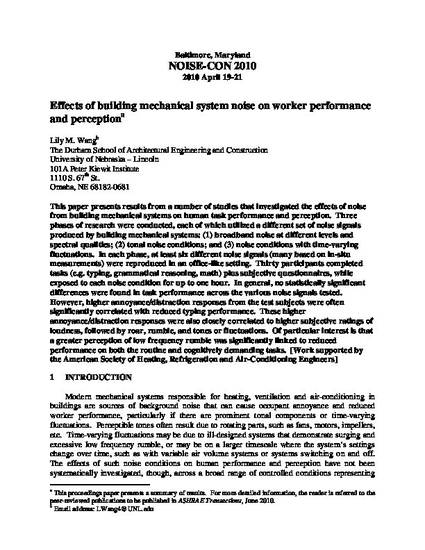
This paper presents results from a number of studies that investigated the effects of noise from building mechanical systems on human task performance and perception. Three phases of research were conducted, each of which utilized a different set of noise signals produced by building mechanical systems: (1) broadband noise at different levels and spectral qualities; (2) tonal noise conditions; and (3) noise conditions with time-varying fluctuations. In each phase, at least six different noise signals (many based on in-situ measurements) were reproduced in an office-like setting. Thirty participants completed tasks (e.g. typing, grammatical reasoning, math) plus subjective questionnaires, while exposed to each noise condition for up to one hour. In general, no statistically significant differences were found in task performance across the various noise signals tested. However, higher annoyance/distraction responses from the test subjects were often significantly correlated with reduced typing performance. These higher annoyance/distraction responses were also closely correlated to higher subjective ratings of loudness, followed by roar, rumble, and tones or fluctuations. Of particular interest is that a greater perception of low frequency rumble was significantly linked to reduced performance on both the routine and cognitively demanding tasks. [Work supported by the American Society of Heating, Refrigeration and Air-Conditioning Engineers]
Available at: http://works.bepress.com/lilymwang/1/

From NOISE-CON 2010, Baltimore, Maryland, April 19-21, 2010.